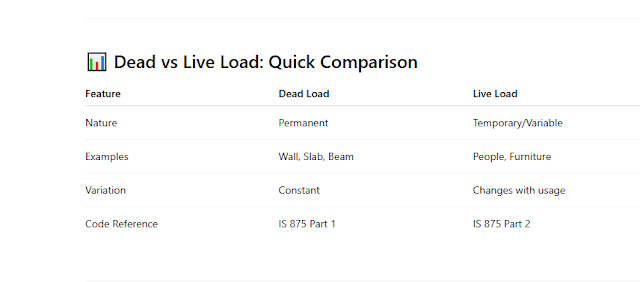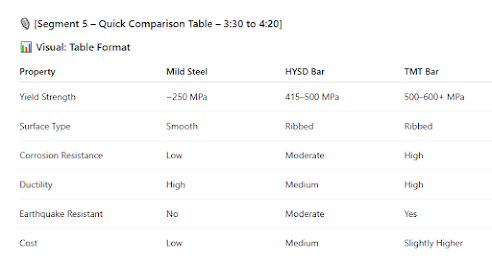Natural Ways to Soften Hard Water at Home – Easy DIY Solutions
Boiling is one of the simplest ways to soften hard water. ...
Using baking soda. ...
Vinegar treatment. ...
Lemon juice. ...
Using a carbon filter. ...
Adding Epsom salt. ...
Installing a shower head filter. ...
Using a magnetic water softener
1. Boiling
Boiling is one of the simplest ways to soften hard water. When water is boiled, the heat causes calcium and magnesium ions to precipitate out, reducing the hardness. ● How to boil to soften water: Simply boil water in a pot and let it cool down. The minerals will settle down, and you can pour the softened water into another container, leaving the sediment behind. ● Practical tip: Boil water in batches and store it in clean, covered containers for daily use. 2. Using Baking Soda
Baking soda is an effective and cost-effective way to soften water due to its alkaline properties, which help neutralize minerals.
● Step-by-step guide: Add one teaspoon of baking soda to a gallon of water, stir well, and let it sit for a few hours before using.
● Benefits and precautions: Baking soda not only softens water but also increases its alkalinity. However, overuse can lead to excessive alkalinity, so it’s important to use it sparingly.
3. Vinegar Treatment
Vinegar is a natural acid that can break down the minerals found in hard water, making it softer.
● Instructions: Add one cup of vinegar to a gallon of hard water, mix well, and let it sit for a few hours.
● Suggested type and amount: White vinegar is commonly used, but apple cider vinegar can also be effective. Use one cup of vinegar per gallon of water for optimal results.
4. Lemon Juice
Lemon juice, due to its natural acidity, is another effective way to soften water.
● Procedure: Squeeze the juice of one lemon into a gallon of water, mix well and let it sit for a few hours.
● Additional Benefits: Lemon juice not only softens water but also adds a refreshing scent and mild flavor to it, making it pleasant to drink.
5. Using a Carbon Filter
Carbon filters are effective at removing chlorine and organic compounds, which can contribute to water hardness.
● Installation and Maintenance: Install a carbon filter on your faucet or use a pitcher with a built-in filter. Replace the filter cartridge as recommended by the manufacturer.
● Benefits: Carbon filters improve the taste and odor while reducing water hardness.
6. Adding Epsom Salt
Epsom salt can help soften water by binding with minerals.
● Guide: Dissolve one tablespoon of Epsom salt in one gallon of water and let it sit for a few hours.
● Safety Tip: While Epsom salt is generally safe, it's important not to overuse it, as excessive magnesium can cause health problems.
7. Installing a Shower Head Filter
Shower head filters are designed to remove minerals from the water, providing a softer shower experience.
● Type and Effectiveness: Look for filters that are specifically designed to reduce hardness. Many models also remove chlorine and other impurities.
● Installation and Maintenance: These filters are easy to install and typically require cartridge replacement every few months.
8. Using a Magnetic Water Softener
Magnetic water softeners work by changing the electromagnetic properties of minerals, preventing them from sticking to surfaces.
Installation and use: Attach the magnetic device to your water pipes according to the manufacturer's instructions.
Advantages and disadvantages: While easy to install and maintain, the effectiveness of magnetic softeners can vary depending on the composition and flow rate of the water.
9. Using a Water Softening Pillow
Water-softening pillows are small, portable devices that can be placed in water to reduce hardness.
● Instructions: Place the pillow in a container of water and let it sit for the recommended amount of time, usually a few hours.
● Benefits and limitations: These pillows are convenient and reusable, but may not be suitable for large amounts of water.
10. Using Aloe Vera
Aloe vera has natural properties that can help soften water.
Preparation and Use: Cut an aloe vera leaf, extract the gel and add it to a gallon of water. Mix well and let it sit for a few hours.
● Additional Benefits: Aloe vera not only softens water, but it also has moisturizing properties that are beneficial for the skin.
Softening hard water naturally is both environmentally friendly and cost-effective. By using these ten methods, you can improve the quality of your water, protect your appliances and enjoy healthy skin and hair. Experiment with these techniques to find the ones that work best for you and consider combining them for better effectiveness. Regularly maintaining your home appliances and monitoring water quality will ensure the best results. Try these natural water-softening methods at home and experience the difference!
HINDI VERSION
घर पर कठोर पानी को नरम
करने के प्राकृतिक तरीके - आसान DIY समाधान
उबालना कठोर पानी को नरम
करने के सबसे सरल तरीकों में से एक है। ...
बेकिंग सोडा का उपयोग
करना। ...
सिरका उपचार। ...
नींबू का रस। ...
कार्बन फ़िल्टर का उपयोग
करना। ...
एप्सम नमक मिलाना। ...
शॉवर हेड फ़िल्टर लगाना।
...
चुंबकीय जल सॉफ़्नर का
उपयोग करना
1. उबालना
उबालना कठोर पानी को नरम
करने के सबसे सरल तरीकों में से एक है। जब पानी को उबाला जाता है,
तो गर्मी के कारण कैल्शियम और
मैग्नीशियम आयन बाहर निकल जाते हैं, जिससे कठोरता कम हो जाती है। ● पानी को नरम करने के लिए कैसे उबालें: बस एक बर्तन में पानी
उबालें और उसे ठंडा होने दें। खनिज नीचे बैठ जाएँगे, और आप नरम पानी को दूसरे कंटेनर में डाल सकते हैं,
जिससे तलछट पीछे रह जाएगी। ●
व्यावहारिक सुझाव: पानी को
बैचों में उबालें और इसे दैनिक उपयोग के लिए साफ, ढके हुए कंटेनर में स्टोर करें। 2. बेकिंग सोडा का उपयोग करना
बेकिंग सोडा अपने
क्षारीय गुणों के कारण पानी को नरम करने का एक प्रभावी और किफ़ायती तरीका है,
जो खनिजों को बेअसर करने में
मदद करता है।
● चरण-दर-चरण
मार्गदर्शिका: एक गैलन पानी में एक चम्मच बेकिंग सोडा डालें,
अच्छी तरह से हिलाएँ,
और उपयोग करने से पहले इसे
कुछ घंटों के लिए छोड़ दें।
● लाभ और
सावधानियाँ: बेकिंग सोडा न केवल पानी को नरम करता है बल्कि इसकी क्षारीयता को भी
बढ़ाता है। हालाँकि, अधिक उपयोग
से अत्यधिक क्षारीयता हो सकती है, इसलिए इसका संयम से उपयोग करना महत्वपूर्ण है।
3. सिरका
उपचार
सिरका एक प्राकृतिक एसिड
है जो कठोर पानी में पाए जाने वाले खनिजों को तोड़ सकता है,
जिससे यह नरम हो जाता है।
● निर्देश: एक
गैलन कठोर पानी में एक कप सिरका डालें, अच्छी तरह मिलाएँ, और इसे कुछ घंटों के लिए छोड़ दें।
● सुझाए गए
प्रकार और मात्रा: आमतौर पर सफ़ेद सिरका इस्तेमाल किया जाता है,
लेकिन सेब साइडर सिरका भी
प्रभावी हो सकता है। इष्टतम परिणामों के लिए प्रति गैलन पानी में एक कप सिरका का
उपयोग करें।
4. नींबू
का रस
नींबू का रस,
अपनी प्राकृतिक अम्लता के
कारण, पानी को नरम
करने का एक और प्रभावी तरीका है।
● प्रक्रिया:
एक नींबू के रस को एक गैलन पानी में निचोड़ें, अच्छी तरह मिलाएँ और इसे कुछ घंटों तक ऐसे ही रहने दें।
● अतिरिक्त
लाभ: नींबू का रस न केवल पानी को नरम करता है, बल्कि इसमें एक ताज़ा खुशबू और हल्का स्वाद भी जोड़ता है,
जिससे यह पीने के लिए सुखद हो
जाता है।
5. कार्बन
फ़िल्टर का उपयोग करना
कार्बन फ़िल्टर क्लोरीन
और कार्बनिक यौगिकों को हटाने में प्रभावी होते हैं, जो पानी की कठोरता में योगदान कर सकते हैं।
● स्थापना और
रखरखाव: अपने नल पर एक कार्बन फ़िल्टर लगाएँ या बिल्ट-इन फ़िल्टर वाले घड़े का
उपयोग करें। निर्माता द्वारा सुझाए अनुसार फ़िल्टर कार्ट्रिज को बदलें।
● लाभ: कार्बन
फ़िल्टर पानी की कठोरता को कम करते हुए स्वाद और गंध को बेहतर बनाते हैं।
6. एप्सम
सॉल्ट मिलाना
एप्सम सॉल्ट खनिजों के
साथ बंध कर पानी को नरम करने में मदद कर सकता है।
● गाइड: एक
गैलन पानी में एक बड़ा चम्मच एप्सम सॉल्ट घोलें और इसे कुछ घंटों के लिए ऐसे ही
रहने दें।
● सुरक्षा
सुझाव: जबकि एप्सम नमक आम तौर पर सुरक्षित है, लेकिन इसका अधिक उपयोग नहीं करना महत्वपूर्ण है,
क्योंकि अत्यधिक मैग्नीशियम
स्वास्थ्य समस्याओं का कारण बन सकता है।
7. शॉवर
हेड फ़िल्टर लगाना
शॉवर हेड फ़िल्टर पानी
से खनिजों को हटाने के लिए डिज़ाइन किए गए हैं, जो एक नरम शॉवर अनुभव प्रदान करते हैं।
● प्रकार और
प्रभावशीलता: ऐसे फ़िल्टर की तलाश करें जो विशेष रूप से कठोरता को कम करने के लिए
डिज़ाइन किए गए हों। कई मॉडल क्लोरीन और अन्य अशुद्धियों को भी हटाते हैं।
● स्थापना और
रखरखाव: ये फ़िल्टर स्थापित करना आसान है और आमतौर पर हर कुछ महीनों में कारतूस
बदलने की आवश्यकता होती है।
8. मैग्नेटिक
वॉटर सॉफ़्नर का उपयोग करना
चुंबकीय वॉटर सॉफ़्नर
खनिजों के विद्युत चुम्बकीय गुणों को बदलकर काम करते हैं, उन्हें सतहों पर चिपकने से रोकते हैं।
स्थापना और उपयोग:
निर्माता के निर्देशों के अनुसार अपने पानी के पाइप में चुंबकीय उपकरण संलग्न
करें।
फायदे और नुकसान:
स्थापित करना और रखरखाव करना आसान होने के बावजूद, चुंबकीय सॉफ़्नर की प्रभावशीलता पानी की संरचना और प्रवाह
दर के आधार पर भिन्न हो सकती है।
9. वॉटर
सॉफ़्निंग पिलो का उपयोग करना
वॉटर-सॉफ़्निंग पिलो
छोटे, पोर्टेबल
डिवाइस हैं जिन्हें कठोरता को कम करने के लिए पानी में रखा जा सकता है।
● निर्देश: तकिए को पानी के कंटेनर में रखें और इसे अनुशंसित समय, आमतौर पर कुछ घंटों के लिए ऐसे ही रहने दें।
● लाभ और सीमाएँ: ये तकिए सुविधाजनक और दोबारा इस्तेमाल करने योग्य हैं, लेकिन बड़ी मात्रा में पानी के लिए उपयुक्त नहीं हो सकते हैं।
10. एलोवेरा
का उपयोग करना
एलोवेरा में प्राकृतिक गुण होते हैं जो पानी को नरम करने में मदद कर सकते हैं।
तैयारी और उपयोग: एलोवेरा की पत्ती काटें, जेल निकालें और इसे एक गैलन पानी में डालें। अच्छी तरह मिलाएँ और इसे कुछ घंटों के लिए ऐसे ही रहने दें।
● अतिरिक्त लाभ: एलोवेरा न केवल पानी को नरम करता है, बल्कि इसमें मॉइस्चराइज़िंग गुण भी होते हैं जो त्वचा के लिए फायदेमंद होते हैं।
कठोर पानी को प्राकृतिक
रूप से नरम करना पर्यावरण के अनुकूल और किफ़ायती दोनों है। इन दस तरीकों का उपयोग
करके, आप अपने
पानी की गुणवत्ता में सुधार कर सकते हैं, अपने उपकरणों की सुरक्षा कर सकते हैं और स्वस्थ त्वचा और
बालों का आनंद ले सकते हैं। इन तकनीकों के साथ प्रयोग करके अपने लिए सबसे अच्छा
काम करने वाले तरीकों को खोजें और बेहतर प्रभावशीलता के लिए उन्हें संयोजित करने
पर विचार करें। अपने घरेलू उपकरणों का नियमित रूप से रखरखाव करना और पानी की
गुणवत्ता की निगरानी करना सर्वोत्तम परिणाम सुनिश्चित करेगा। घर पर इन प्राकृतिक
जल-मृदुकरण विधियों को आज़माएं और अंतर अनुभव करें!
-------------------------XXXXXXXXXXXXX------------------------------












